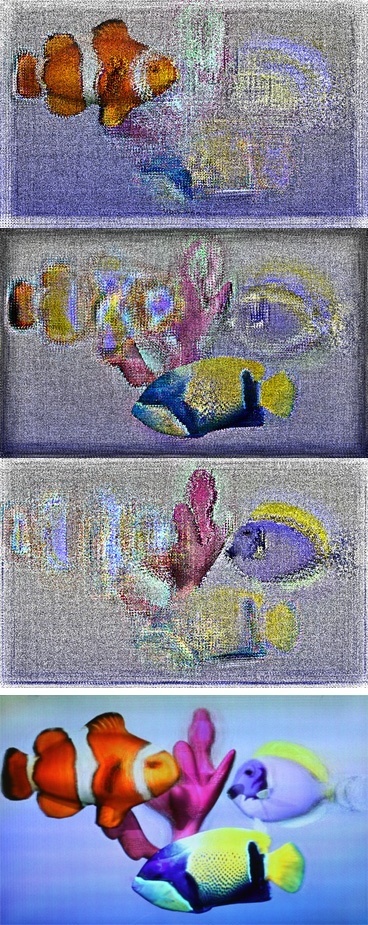
MIT Tries LCD Layers To Improve Glasses-Free 3D
July 12, 2012 by Dave Haynes
[youtube id=”VJWJMh1PmR4″ width=”610″ height=”343″]
Glasses-free 3D, as now presented, kinda, generally sucks. It just doesn’t look great and the visual trickery that’s done using lenticular lens overlays is probably never going to get to a point that people would want to watch it for sustained periods.
Why some companies are using it for ad-based digital signage entirely escapes me.
I’ve been told by someone who is entirely focused on this stuff that we’re probably three to seven years away from glasses-free 3D experiences that are great instead of compromised.
The interesting thing there was the assurance that it’s a WHEN, not an IF.
 The frighteningly smart kids who study and work at MIT are playing with glasses-free 3D, and are taking an entirely different approach that shows a lot of promise.
The frighteningly smart kids who study and work at MIT are playing with glasses-free 3D, and are taking an entirely different approach that shows a lot of promise.
They’ve developed a prototype display that has three layers of LCDs that better create the illusion of three dimensions on a display.
<nerd alert>
Here is how it is described by the MIT guys, via the Demas Capital Partners blog:
… the Media Lab system uses layers of liquid-crystal displays (LCDs). The result is a convincing 3D illusion that requires a refresh rate of about 360 times per second (360 hertz).
Sounds like hard work, but this type of display might not be so far off. LCD TVs with 240 hertz refresh rates are already on the market.
“Holography works, it’s beautiful, nothing can touch its quality,” says Douglas Lanman, a postdoc at the Media Lab. “The problem, of course, is that holograms don’t move. To make them move, you need to create a hologram in real-time, and to do that, you need … little tiny pixels, smaller than anything we can build at large volume at low-cost. So the question is, what do we have now? We have LCDs. They’re incredibly mature, and they’re cheap.”
Though you may not think this technology is available, you might have already held something similar in your hands. The Nintendo 3DS uses two layered LCD screens to produce the illusion of depth, with the bottom screen simply displaying alternating dark and light bands.
According to MIT, this technology is already more than a century old and it produces a stereoscopic image.
Lanman, graduate student Matthew Hirsch and professor Ramesh Raskar, who leads the Camera Culture group, reasoned that by tailoring the patterns displayed on the top and bottom screens to each other, they could filter the light emitted by the display in more sophisticated ways, creating an image that would change with varying perspectives.
In a project they dubbed HR3D, they developed algorithms for generating the top and bottom patterns as well as a prototype display, which they presented at Siggraph Asia in 2010.
The problem is that, whereas a stereoscopic system such as a 3D movie projector or the 3DS needs to display only two perspectives on a visual scene, one for each eye, the system the Media Lab researchers envisioned had to display hundreds of perspectives in order to accommodate a moving viewer.
That was too much information to display at once, so for every frame of 3D video, the HR3D screen in fact flickered 10 times, displaying slightly different patterns each time. With this approach, however, producing a convincing 3D illusion would require displays with a 1,000-hertz refresh rate.
To get the refresh rate down to 360 hertz, the researchers added another LCD screen, which displays yet another pattern. That makes the problem of calculating the patterns exponentially more complex, however. In solving that problem, Raskar, Lanman and Hirsch were joined by Gordon Wetzstein, a new postdoc in the Camera Culture group.



Leave a comment